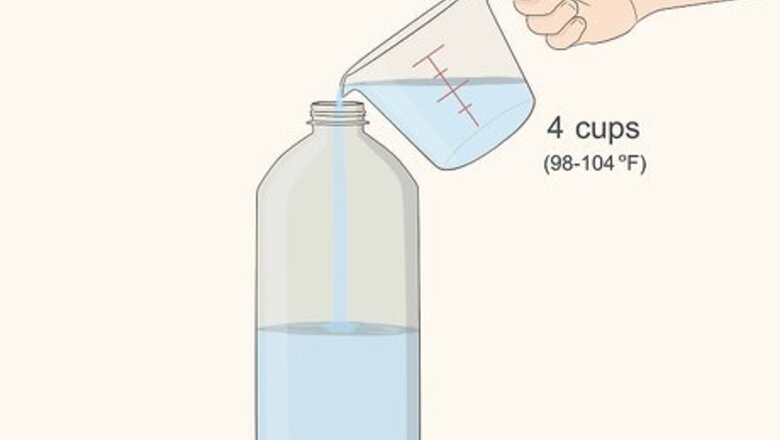
views
- Mix 4 cups (0.95 L) of warm water with 2 teaspoons (11 g) of table salt. Combine the mixture with a doctor-recommended amount of saline solution in an enema bag.
- Use a sterile enema kit to apply the enema, as well as petroleum jelly or anal lubricant.
- Do not use food or other home remedies for your enema, as these ingredients can introduce harmful bacteria to your colon or cause an electrolyte imbalance.
- Only administer the enema with your doctor’s approval. Enemas can be safe to administer at home, but they also carry some health risks.
Mixing a Saline Solution Enema
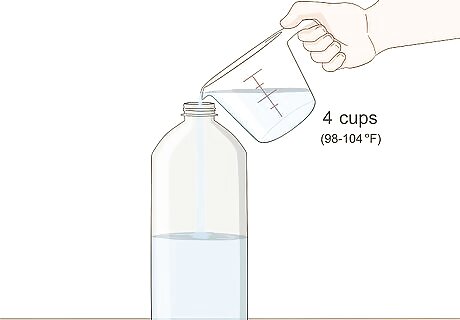
Pour 4 cups (0.95 L) of warm water into a large clean bottle. Find a sterile bottle that's large enough to hold the water and pour 4 cups (0.95 L) of warm tap water directly into it. To sterilize the bottle, boil it in water for 5 minutes or run it through your dishwasher on the hottest setting. Although tap water is safe to use, you can also use distilled water. Make sure the water is comfortably warm, somewhere between 98 and 104 °F (37 and 40 °C).
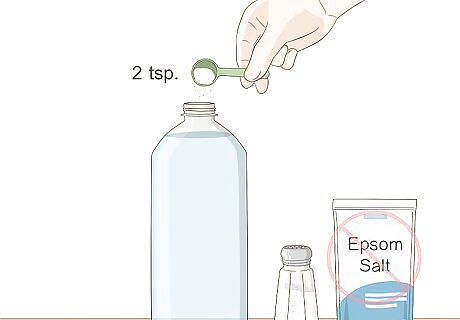
Add 2 teaspoons (11 g) of table salt to the bottle. Use a measuring spoon to drop the table salt right into the bottle with the warm water. It's important not to eyeball the amount of salt or the solution might not be the correct strength.Warning: Never prepare a saline solution enema using Epsom salts. This can cause an extreme magnesium imbalance in your body which can be fatal.
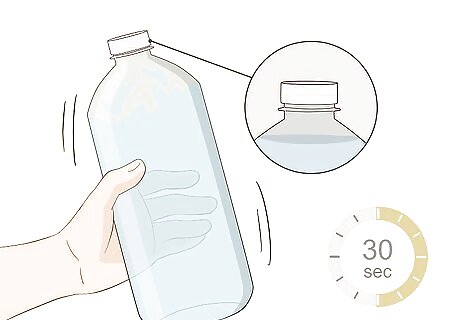
Seal the bottle shut and shake it until the salt dissolves. Ensure the cap is screwed on tightly so no water leaks and vigorously shake the bottle until you see the salt dissolve in the water. This will take around 30 seconds. The saline solution will be clear since there's very little salt in comparison to the water.
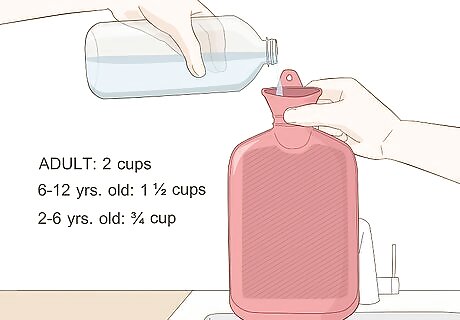
Pour the recommended amount of warm saline into the enema bag. Ask your doctor how much saline solution to use. Adults, in general, will need to pour 2 cups (470 ml) of the solution into the bag.Variation: Instead of using a saline solution, you could use a bottle of pure mineral oil, which will soften the stool and lubricate your colon. Purchase a 4.5 fl oz (130 ml) bottle or pour that amount into the enema bag. If the enema is for a kid between 2 and 6 years old, use half that amount. For kids between the ages of 6 and 12, use 1 ⁄2 cups (350 ml) of saline solution; for children between the ages of 2 and 6, use ⁄4 cup (180 ml).
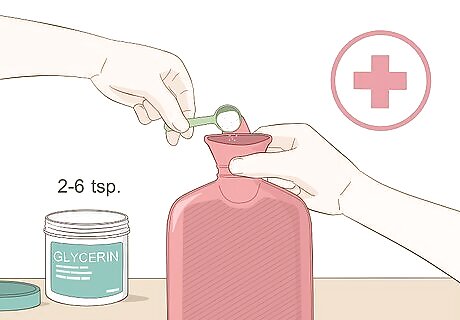
Put glycerin or prescription medication into the bag, if doctor-recommended. For an extra laxative effect, your doctor might recommend adding 2 to 6 teaspoons (9.9 to 29.6 ml) of glycerin or prescription medication to treat bowel conditions, such as inflammatory bowel disease or ulcerative colitis. Follow your doctor's prescription when adding these medications to an enema. You may need to hold them longer or take them at specific times of the day.
Administering an Enema Safely

Get your doctor's consent before having an enema. There are several reasons why your doctor might recommend an enema. They can help if you're experiencing severe constipation because they can stimulate your bowels to pass stool. Your doctor might also prescribe an enema if you're going to have bowel surgery. If you're having bowel surgery, you'll usually need to do the enema around 2 hours before the procedure.
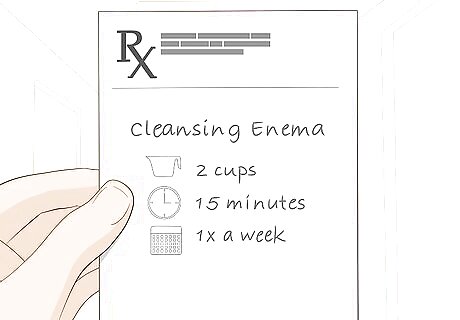
Ask your doctor to recommend a dose and frequency. If your doctor thinks you'd benefit from doing an enema at home, ask them to prescribe a specific type. Also ask how much liquid to use and how often to perform the enema. It's important to closely follow your prescription because frequent enemas can damage your colon or lead to dependence on enemas.

Use a sterile enema kit to prevent infection. It's important to use sterile tools for each enema. You can purchase a kit that contains a sterile enema bag and tubing with a nozzle. Depending on the kit, it may also include a lubricant. You can buy enema kits at pharmacies, medical supply stores, or online.
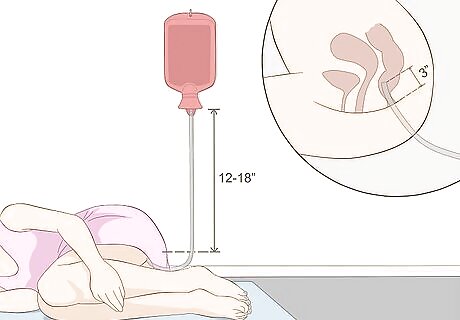
Administer the enema. Hang the enema bag on a hook about 12–18 in (30–46 cm) above your rectum or have someone hold it at this level for you. Positioning the enema bag this way will allow the fluid to flow freely. Rub the skin around your anus and the nozzle of the enema tube with anal lubricant or petroleum jelly. Lie on your side and bring your legs up towards your chest. Then, insert the nozzle into your anus until it's about 3 inches (7.6 cm) deep and release the clamp that's on the tube. The solution will start to flow into your bowels. If you're having trouble inserting the nozzle, try bearing down while you do it.
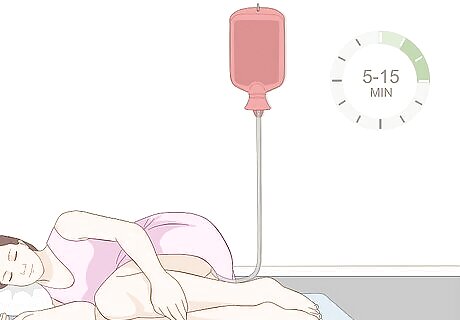
Hold the saline enema in for up to 15 minutes. Stay in the same position and wait for at least 5 minutes. Once the enema begins to work, you will likely start to feel the urge to pass stool. Try to relax and breathe slowly if you feel cramps in your abdomen. If you added glycerin to the solution, you may need to hold the enema for up to 60 minutes.
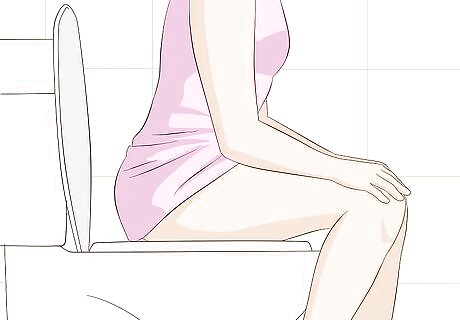
Expel the enema and stool into the toilet. When you feel ready for a bowel movement, go to the restroom and sit on the toilet. It may take some time to expel the enema and pass stool, so don't worry if you're sitting for a while before you have a movement. Stay on the toilet until you no longer feel an urge to defecate.
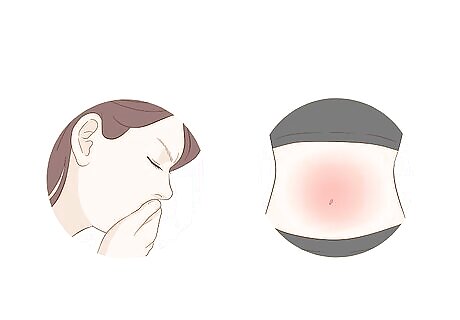
Recognize the risks of using enemas at home. Common side effects of enemas include nausea, vomiting, diarrhea, and cramps or abdominal pain. In rare cases, you might pierce a hole in your colon or cause a severe electrolyte imbalance, which is why you must only perform an enema if your doctor advises you to do it. If you don't feel comfortable with the risks of doing an enema at home, ask your doctor if the enema can be done in the hospital.
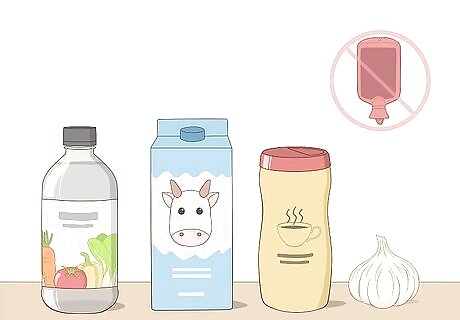
Avoid using home remedies as enemas since these can damage your colon. You've probably heard of coffee, milk, or vinegar enemas. Unfortunately, these can introduce harmful bacteria to your colon or cause an electrolyte imbalance, making them dangerous to use as enemas. Also avoid making enemas with any of these ingredients:Warning: Although you may have seen soap suds enemas, research has shown that it's only safe to use in an extreme, emergency room situation. Lemon juice Alcohol Garlic Aloe Thistle Mineral water Wild herbs Turpentine If you use a store-bought enema, get a handheld mirror or use the tip with your finger to help guide it. Put the tip of the applicator next to your finger and guide it toward the anus. Use something well lubricated, like KY jelly or Vaseline. Try not to point it too far forward or backward. Push it in gently. It should not be painful. But you may feel the pressure. Hold the medicine for a few minutes. For example, the package may say 15 minutes. You can do it while lying on your side or sitting on the toilet with your feet upright.




















Comments
0 comment